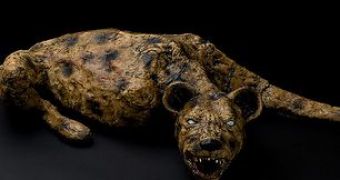Extinct carnivorous mammals apparently shrank in size during a global warming event that happened 55 million years ago, a new study led by the University of Florida, in collaboration with Ross Secord, assistant professor at the University of Nebraska, and Doug Boyer, assistant professor at Brooklyn College, sustains.
Scientists already knew that herbivorous animals shrank during the earliest Eocene, when global warming occurred, and they supposed it was because of the high levels of carbon dioxide, as lead author Stephen Chester, a Yale University doctoral student who began the research at UF with Jonathan Bloch, curator of vertebrate paleontology at the Florida Museum of Natural History, explains.
“Surprisingly, this study shows that the same thing happened in some carnivores, suggesting that other factors may have played a critical role in their evolution,” he adds.
This study already appeared in the December paper issue of the Journal of Mammalian Evolution, is now available online and it describes that a new species evolved to half the size of its ancestor, because of the global warming process.
This species is the hyena-like animal, Palaeonictis wingi, which passed from the size of a bear to that of a coyote during the 200,000-year period when Earth's average temperature rose about 15 degrees Fahrenheit, and once the temperature cooled back down, the animal evolved to a larger size.
This conclusion came after the researchers discovered an almost entire jaw from the animal in Wyoming's Big Horn Basin in 2006 during a fossil-collecting expedition, led by Bloch, a co-author on the study.
He said that this discovery can help scientists better understand what impact will the current global warming have of the existent animal species.
“Documenting the impact of global climate change in the past is one of the only real experiments that can inform us about what the effects global warming might have on mammals in the near future,” he added.
What is rather strange is that scientists can only assume that the increased levels of carbon dioxide and a drier environment during the warmer time period, helped trigger this phenomenon, but they do not completely its complete causes.
This new species was named after Scott Wing, a paleobotanist at the Smithsonian National Museum of Natural History that had studied the impact of past global warming on forests, and has had an important role in the research carried out at the Big Horn Basin.

 14 DAY TRIAL //
14 DAY TRIAL //